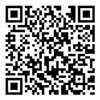Specific Solutions
Can You Use a Template to Translate an Audit Report?
Templates help—but they’re not enough.
At Elite Translation, we often get this question from clients working with financial disclosures, IPO documentation, or annual audits:
“Audit reports all follow a standard structure, right? Can’t we just use a translation template?”
It’s a reasonable question—but the answer is more nuanced.
In short:
You can refer to templates—but you cannot rely on them blindly.
When it comes to audit translation, quality is not optional. It’s a matter of regulatory compliance and professional credibility.
1. Yes, Templates Help—They Improve Consistency
Audit reports do contain standardized structures and terminology, such as:
Opinion types (Unqualified, Qualified, Adverse, Disclaimer)
Auditor’s responsibility, management’s responsibility, scope of work
Key reporting phrases like:
“In our opinion, the financial statements present fairly, in all material respects…”
These standardized expressions align with IFRS, ISA, CAS, or other local regulatory frameworks.
So yes, referencing templates helps ensure regulatory alignment and linguistic consistency.
✅ Templates are a tool. But they are not a substitute for judgment.
2. But You Can’t “Copy and Paste” Your Way Through It
Every audit report is context-specific:
Different reporting periods, entities, and financial data
Unique audit circumstances: scope limitations, emphasis of matter, risk disclosures
Tailored language to reflect specific industry regulations or client instructions
Variations in accounting standards, jurisdictions, and company structures


















